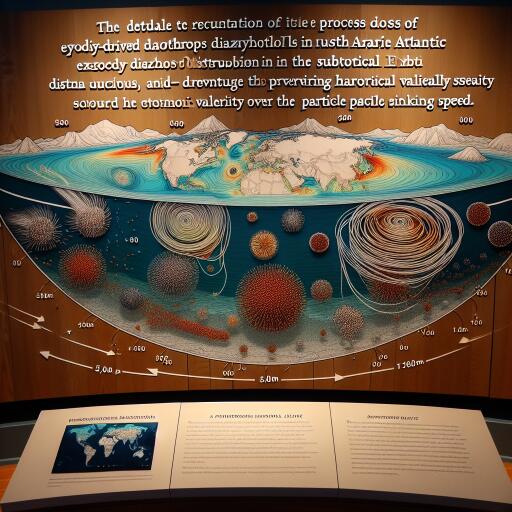
Eddy Dynamics and Diazotroph Diversity in the North Atlantic
The subtropical North Atlantic is a vibrant canvas of marine life, where the distribution of diazotrophs, microorganisms capable of fixing atmospheric nitrogen into a form usable by living organisms, is critically influenced by the dynamic nature of oceanic eddies. A recent investigation sheds light on the nuanced relationships between diazotrophs and the mesoscale physical environment, particularly focusing on a prominent anticyclonic eddy, referred to here as “Bentayga,” which was analyzed during late autumn of 2022.
Bentayga, a warm-core eddy discovered south of Gran Canaria Island and having formed five months prior to the study, revealed fascinating insights into the spatial complexities of diazotroph distribution. This eddy stretched approximately 150 kilometers in diameter, encompassing various water masses that exhibit differing biogeochemical characteristics. The core of Bentayga, identified by its particularly warm water, contrasted with its peripheries, which hosted colder water filaments, hinting at interactions with the surrounding oceanic waters.
The study embarked on a detailed analysis of diazotroph community composition in relation to particle types, characterized by their sinking speeds, and found significant insights into how these microorganisms associate with their environment. Diazotrophs were grouped into cyanobacterial diazotrophs and non-cyanobacterial diazotrophs (NCDs) based on their biological characteristics, with each group showing preferences for different marine particles based on their sinking behavior.
In exploring the distribution and abundance of these diazotrophs within Bentayga, researchers discovered that horizontal variability played a more significant role than particle sinking speed in determining community structure. Cyanobacterial diazotrophs such as UCYN-A showed a remarkable adaptability, thriving throughout the eddy’s expanse. In contrast, Trichodesmium and Crocosphaera were found predominantly in the eddy’s frontal zones, areas where colder water masses meet warmer ones, creating a fertile zone for marine life.
The composition of NCDs presented an intriguing pattern, with variations observed not only between different particle types but also across the eddy’s horizontal gradient. Gammaproteobacteria were more abundant in the east, Betaproteobacteria dominated the west, and Alphaproteobacteria were primarily found in fast-sinking particles, highlighting the complex interplay between diazotroph distribution and the physical environment of the marine eddy.
By integrating data from amplicon sequencing with hydrographic and biogeochemical analyses, the study offered new insights into how mesoscale oceanographic phenomena, such as eddies, significantly influence the ecological dynamics of nitrogen-fixing microorganisms. It unveiled a world where the physical structure of water masses, influenced by temperature, nutrient content, and particulate organic matter, shapes the biodiversity of diazotrophs and, consequently, the ecological function of marine ecosystems.
Diazotroph heterogeneity, particularly among the NCDs, emphasized the ecological significance of these microorganisms in dynamic marine environments. With cyanobacterial diazotrophs like UCYN-A playing a key role in nitrogen fixation across the eddy, and NCDs thriving in association with different particle types, this study presents a nuanced understanding of the ecological interactions that sustain marine life in the subtropical North Atlantic.
The findings highlight the importance of considering both biological and physical factors in understanding marine microbial ecosystems. The intricate dance between diazotrophs and their physical environment within eddies like Bentayga underscores the complexity of marine ecosystems and the need for a multidisciplinary approach to unravel the ecological puzzles of the ocean.
In conclusion, the distribution and interaction of diazotrophs within the subtropical North Atlantic reveal how physical oceanographic features, such as mesoscale eddies, play a pivotal role in shaping marine biological communities. This research not only contributes to our understanding of marine nitrogen fixation but also highlights the interconnectedness of physical and biological processes in the ocean, a critical consideration for predicting and mitigating the impacts of climate change on marine ecosystems.





Leave a Reply